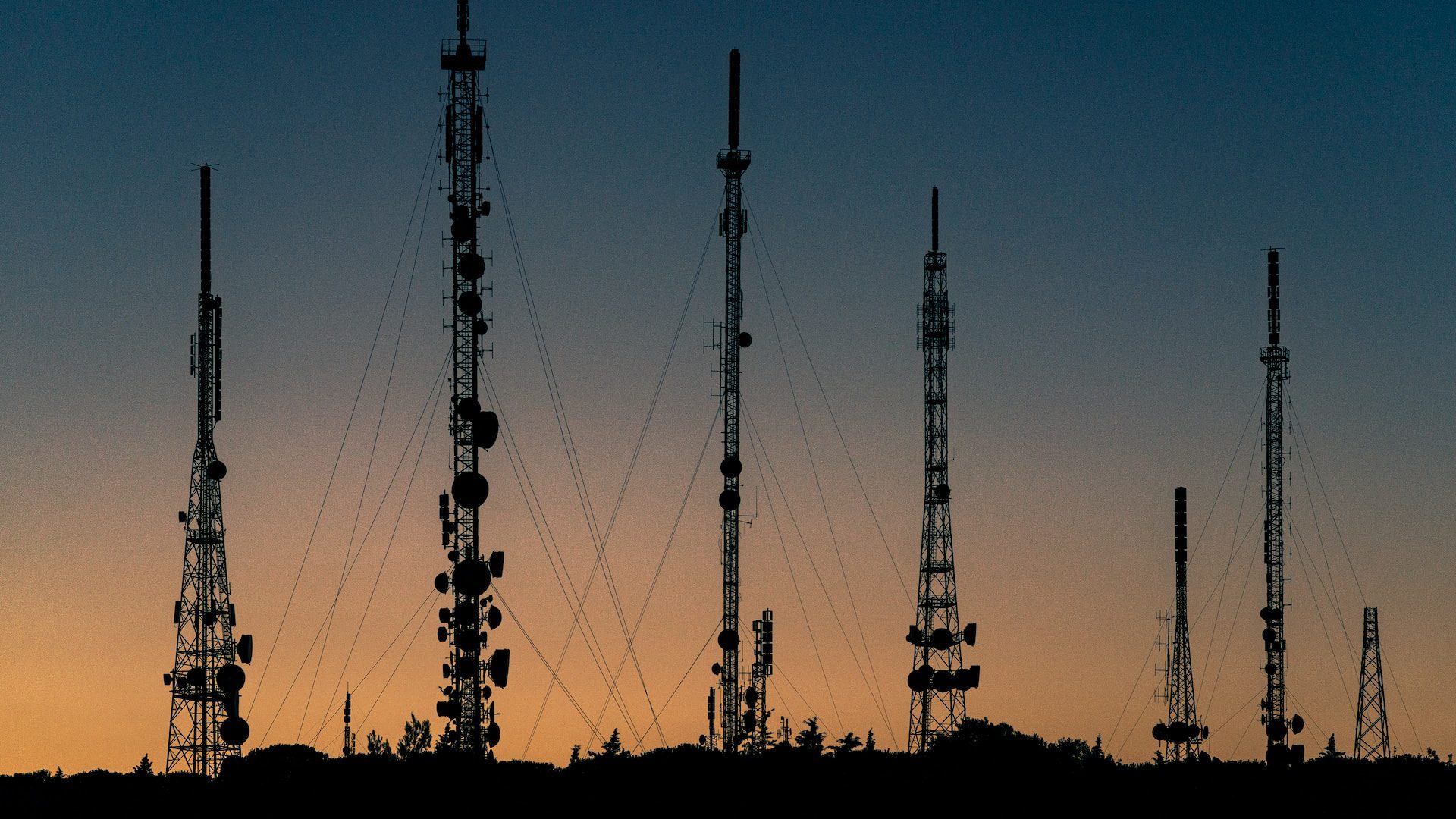The telecommunications industry has come a long way since the days of traditional landlines and rotary phones. With the advent of mobile phones and the internet, communication has become easier and more accessible than ever before. But the evolution of telecom doesn’t stop there. In recent years, we’ve seen the rise of 5G technology, promising even faster and more reliable connectivity.
As we look back on the history of telecom, we can see how far we’ve come. From the first telegraph in the 19th century to the widespread adoption of smartphones in the 21st century, each innovation has brought us closer together and changed the way we communicate. And with 5G on the horizon, we can expect even more exciting developments in the years to come.
But with progress comes challenges. As the world becomes more connected, we must also address issues of privacy, security, and accessibility. As we explore the evolution of telecom, we must consider not only the technological advancements, but also the social implications of these changes.
The Dawn of Telecommunication
Telecommunication has come a long way since its inception. Let’s take a look at the birth of landlines and how the telegraph and telephone paved the way for modern telecommunications.
Birth of Landlines
Landlines were the first form of telecommunication. They were first developed in the 1870s and became popular in the early 1900s. Landlines were used to transmit voice messages over long distances. They were an important tool for businesses and governments, as they allowed for rapid communication over long distances.
The Telegraph and the Telephone
The telegraph was invented in the early 1800s and was the first form of long-distance communication. It used a series of electrical pulses to transmit messages over long distances. The telegraph was widely used by businesses and governments to communicate over long distances.
The telephone was invented in the late 1800s and revolutionised the way people communicated. It allowed people to speak to each other over long distances, without the need for written messages. The telephone became an essential tool for businesses and individuals alike.
The birth of landlines, the telegraph, and the telephone paved the way for modern telecommunications. These inventions allowed people to communicate over long distances quickly and easily, and laid the foundation for the development of modern communication technologies.
The Era of Mobile Communication
Introduction to Cellular Networks
In the 1980s, the world saw a major shift in telecommunications with the advent of cellular networks. Unlike traditional landlines, cellular networks used radio waves to transmit signals between mobile devices and base stations. This allowed for greater mobility and flexibility in communication, setting the stage for the mobile revolution that we see today.
From 1G to 2G: The Birth of Digital
The first generation of cellular networks (1G) was primarily analogue and provided only basic voice communication. However, with the introduction of the second generation (2G), digital technology became the norm. This allowed for greater efficiency and security in communication, as well as the ability to send text messages and access basic data services.
The shift to digital technology in 2G also paved the way for the development of more advanced mobile networks, such as 3G and 4G. These networks have continued to evolve, with the latest generation (5G) promising even faster speeds and more advanced capabilities.
The era of mobile communication has fundamentally changed the way we communicate and interact with each other, and it will continue to shape our world in the years to come.
The Rise of the Internet and Broadband
The advent of the internet and broadband technology revolutionised the telecommunications industry. In the late 1990s and early 2000s, the internet became more accessible to the general public, and broadband technology made it possible to transmit data at much higher speeds than ever before. This led to a surge in demand for internet-based services such as email, online gaming, and video streaming.
Broadband technology allowed for the transmission of large amounts of data over long distances, which made it possible to connect people from all around the world. This allowed for the rise of social media platforms, online marketplaces, and other internet-based services that have become an integral part of our daily lives.
The introduction of broadband technology also paved the way for the development of new technologies such as Voice over Internet Protocol (VoIP), which allows for voice calls to be transmitted over the internet. This technology has become increasingly popular, and many people now use VoIP services such as Skype and WhatsApp to make voice and video calls.
The rise of the internet and broadband technology has had a profound impact on the telecommunications industry. It has made it possible to connect people from all around the world, and has given rise to a wide range of new services and technologies that have become an integral part of our daily lives.
The Advent of 3G and 4G
With the advent of 3G and 4G, the telecommunications industry saw a significant shift in the way people accessed the internet and communicated with each other. These technologies revolutionised the way we use our mobile devices and paved the way for the development of new applications and services.
3G: The Start of Mobile Internet
3G, or third-generation, technology was introduced in the early 2000s and marked the beginning of the mobile internet era. With 3G, mobile devices could access the internet at much faster speeds, allowing for the development of mobile applications and services such as email, social media, and video streaming.
One of the key features of 3G was its ability to provide high-speed data transmission, enabling faster downloads and uploads of data. This technology also enabled video calling, which was a significant improvement over the traditional voice-only calls.
4G: The Era of Speed and Efficiency
4G, or fourth-generation, technology was introduced in the late 2000s and brought with it even faster internet speeds and improved efficiency. With 4G, mobile devices could access data at speeds of up to 100Mbps, making it possible to stream high-quality video content and download large files in seconds.
As well as faster speeds, 4G also brought improvements in efficiency, allowing for better use of network resources and improved battery life. This technology also enabled the development of new applications and services such as mobile payments and advanced location-based services.
The advent of 3G and 4G marked a significant milestone in the evolution of telecommunications, providing faster and more efficient ways for people to communicate and access the internet on their mobile devices.
The 5G Revolution
Understanding 5G
5G is the fifth generation of mobile networks, and it promises to revolutionise the way we communicate. With its faster speeds, lower latency, and greater capacity, 5G will enable new applications and services that were previously impossible.
One of the key features of 5G is its ability to support a massive number of connected devices. This will be essential for the Internet of Things (IoT), where billions of devices will be connected to the internet. 5G will also enable new applications in areas such as autonomous vehicles, virtual reality, and telemedicine.
The Impact of 5G on Telecommunication
The impact of 5G on the telecommunication industry will be significant. It will enable new business models and revenue streams, as well as improve the customer experience. With its faster speeds and lower latency, 5G will enable new services such as real-time gaming, augmented reality, and virtual reality.
5G will also enable new network architectures, such as network slicing, which will allow operators to offer customised services to different customers. This will be particularly important for enterprise customers, who will be able to use 5G to support mission-critical applications.
5G represents a significant step forward for the telecom industry. It will enable new applications and services, improve the customer experience, and create new business opportunities. We are excited to see how 5G will transform the telecom industry in the coming years.
The Future of Telecommunication
As we move forward, the world of telecommunication is set to experience even more significant changes. Emerging technologies such as 5G, IoT, and AI will play a crucial role in shaping the future of telecommunication.
Emerging Technologies
5G is the next generation of wireless technology that is set to revolutionise the way we communicate. With its faster speeds, lower latency, and higher capacity, 5G will enable new applications such as self-driving cars, remote surgery, and virtual reality. The deployment of 5G networks is already underway, and we can expect to see widespread adoption in the coming years.
IoT, or the Internet of Things, is another technology that is set to transform the way we communicate. IoT refers to the network of devices, vehicles, and other objects that are embedded with sensors, software, and connectivity, allowing them to exchange data. The proliferation of IoT devices will create new opportunities for communication and collaboration, as well as new challenges in terms of security and privacy.
The Role of AI and IoT
AI, or artificial intelligence, is another technology that will play a crucial role in the future of telecommunication. AI has the potential to automate many of the tasks that are currently performed by humans, such as customer service and network maintenance. This will not only improve efficiency but also reduce costs for telecom companies.
IoT and AI will work together to create a more connected and intelligent world. For example, AI algorithms can process the vast amounts of data generated by IoT devices, allowing us to gain insights and make better decisions. This will enable us to create more efficient and sustainable systems, such as smart cities and energy grids.
The future of telecommunication looks bright, with new technologies and innovations set to transform the way we communicate and collaborate. As these technologies continue to evolve, we can expect to see even more exciting developments in the years to come.
At Prestige Telecom Group, we provide a range of business telecom services, and have experience in helping our customers integrate these solutions into their businesses. Contact us today to discover how our team can help you.





